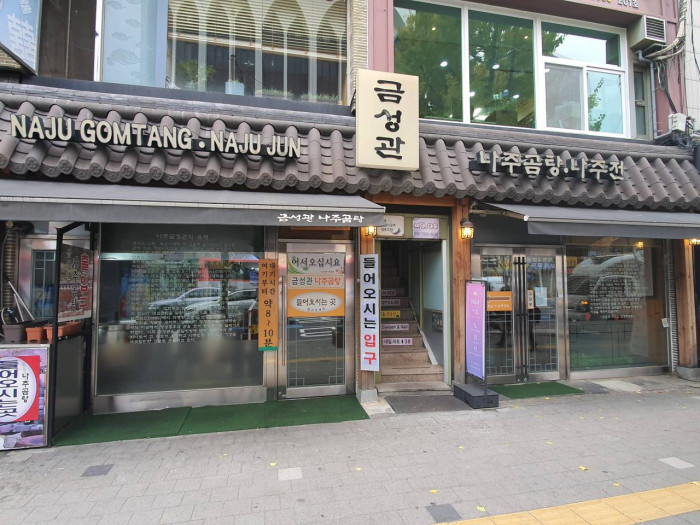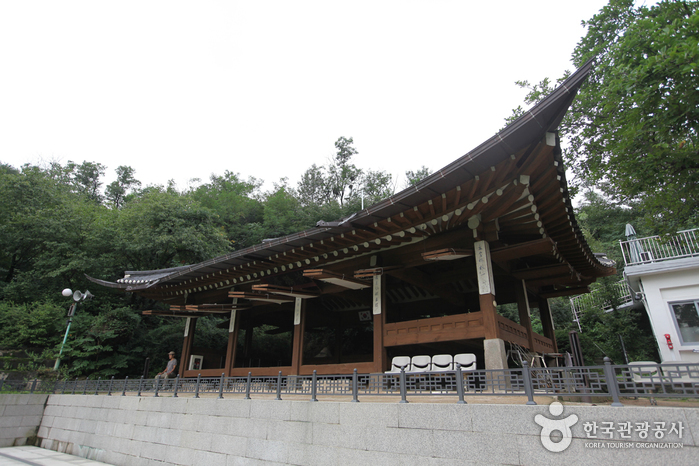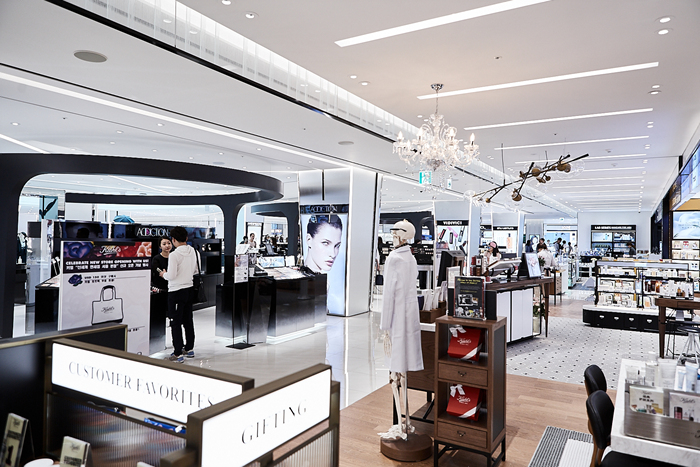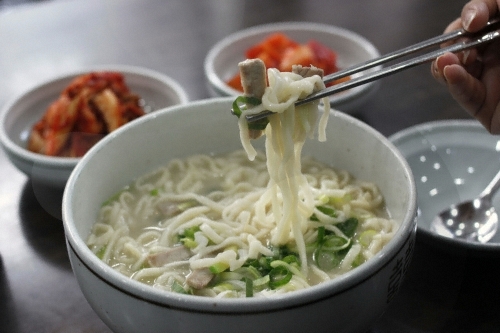Geumseonggwan Najugomtang (금성관나주곰탕)
3.3Km 2021-03-18
29, Namdaemun-ro, Jung-gu, Seoul
+82-2-753-7898
This is a Korean cuisine located in Myeong-dong, Seoul. The representative menu is Naju beef bone soup. It serves local dishes produced from Naju-si, Jeolla-do.
Golfzon Market - Yaksu Branch [Tax Refund Shop] (골프존마켓 약수)
3.3Km 2024-04-19
214, Dongho-ro, Jung-gu, Seoul
-
Hwanghakjeong Pavilion (황학정)
3.4Km 2020-04-02
15-32, Sajik-ro 9-gil, Jongno-gu, Seoul
+82-2-738-5785
Hwanghakjeong Pavilion was built in 1898 by decree of King Gojong’s. It was originally set up close to the northern wall of Hoesangjeon in Gyeonghuigung Palace for archery practice. In 1922 when the Japanese colonial government sold buildings of Gyeonghuigung Palace to the public to build Gyeongseong Middle School in the location, the Hwanghakjeong Pavilion was bought and restored at the current location, which is an old site of Deunggwajeong Pavilion located to the North of Sajik Park.
It is relatively large for a pavilion, but the structure is plain and simple. There is a well behind the pavilion to the southwest. A rock behind the well has an engraved poem about eight beautiful scenes of Hwanghakjeong. Located to the right of the pavilion building (northeast of the building) is Hancheongak Pavilion, which has unique roof. To the west of the pavilion is Sauhoegwan Hall that was built with reinforced concrete.
Shinsegae Duty Free Shop - Myeong-dong Branch (신세계면세점 명동점)
3.4Km 2017-06-13
77, Toegye-ro, Jung-gu, Seoul
Opened in May 2016, the Shinsegae Duty Free Store in Myeong-dong offers culture, tourism, and shopping on the 8-12 floors of the main branch of Shinsegae Department Store. The shops sell famous international brands as well as top Korean brands for a global shopping experience. The store is located nearby popular tourist attractions N Seoul Tower and Namdaemun Traditional Market, making it easy to enjoy tourism and shopping in one location.
Shinsegae Duty Free Shop - Myeong-dong Branch Handicraft Store (신세계면세점 명동점 수공예품 매장)
3.4Km 2016-10-11
77, Toegye-ro, Jung-gu, Seoul
Korea Craft and Design Foundation Handicraft Store located within the giftshop of Shinsegae Duty Free Shop Myeong-dong Branch sells handcrafted everyday props and cultural crafts. Dedicated to the concept of "Artisans, and Artists," the store introduces young artists as well as famous handicraft masters along with their masterpieces of diverse genre in the world of Korean arts and craft.
Olive Young - Jongam Branch [Tax Refund Shop] (올리브영 종암)
3.4Km 2024-04-17
123, Jongam-ro, Seongbuk-gu, Seoul
-
The Shilla Duty Free Shop - Seoul Branch (신라면세점 (서울점))
3.4Km 2022-08-05
249, Dongho-ro, Jung-gu, Seoul
+82-1688-1110
The Shilla Duty Free Shop Seoul Store is located inside The Shilla Seoul Hotel. The duty free shop has over 400 brand stores that sell perfume, cosmetics, clothes, bags, watches, and jewelry, all of which can be purchased at discounted prices. Convenient amenities and services such as the rooftop cafe, free valet parking, and an outdoor sculpture park are also prepared so that customers can enjoy a carefree shopping experience.
Jeongdong Guksi (정동국시)
3.4Km 2024-06-19
5 Jeongdong-gil, Jung-gu, Seoul
02-732-0114
Jeongdong Guksi features a rich soup with a clean taste, created by carefully removing the oil dozens of times while boiling Korean beef bones for 15 hours. The restaurant uses this same beef bone broth in their mandutguk (dumpling soup), something not many restaurants do. The rich flavor of the broth combined with the soft dumplings, made in-house daily, is a must-try. The restaurant is also surrounded by many cultural and artistic spaces, making it a great addition to tours in the area.
Seoul Yangnyeongsi Market (서울 약령시장)
3.4Km 2021-06-09
10, Yangnyeongjungang-ro, Dongdaemun-gu, Seoul
+82-2-969-4793
"Yangnyeongsi," which literally means medicine city district, refers to a central Oriental medicine district formed near major cities where medicinal herbs are collected and produced. Yangneongsi were first established by royal order during the Joseon dynasty for the purpose of effective production, distribution and management of medicinal products and herbs.
Seoul Yangnyeongsi Market history is relatively short, having formed naturally in the mid-1960s by medicinal herb merchants who gathered here seeking to sell their products with the city bus terminal and Cheongnyangni Station as their central base. Originally, these merchants came to Seoul through the old Seongdong Station and Chyeongnyangni Station after the Korean War, seeking to sell medicinal herbs and vegetation products that were cultivated and collected in the Gyeonggi-do and Gwangwon-do regions. This small market that was once open on an empty plot of land was later authorized as an official market establishment. Road and railroad developments between Gangwon-do and Seoul were followed and by the 1970s, the market grew into what is now seen today. The name Seoul Yangnyeongsi Market was given by the Seoul mayor in 1995.
![Wangsol Pharmacy [Tax Refund Shop] (왕솔약국)](http://tong.visitkorea.or.kr/cms/resource/27/2887827_image2_1.jpg)

![Golfzon Market - Yaksu Branch [Tax Refund Shop] (골프존마켓 약수)](http://tong.visitkorea.or.kr/cms/resource/43/2878743_image2_1.jpg)





 English
English
 한국어
한국어 日本語
日本語 中文(简体)
中文(简体) Deutsch
Deutsch Français
Français Español
Español Русский
Русский